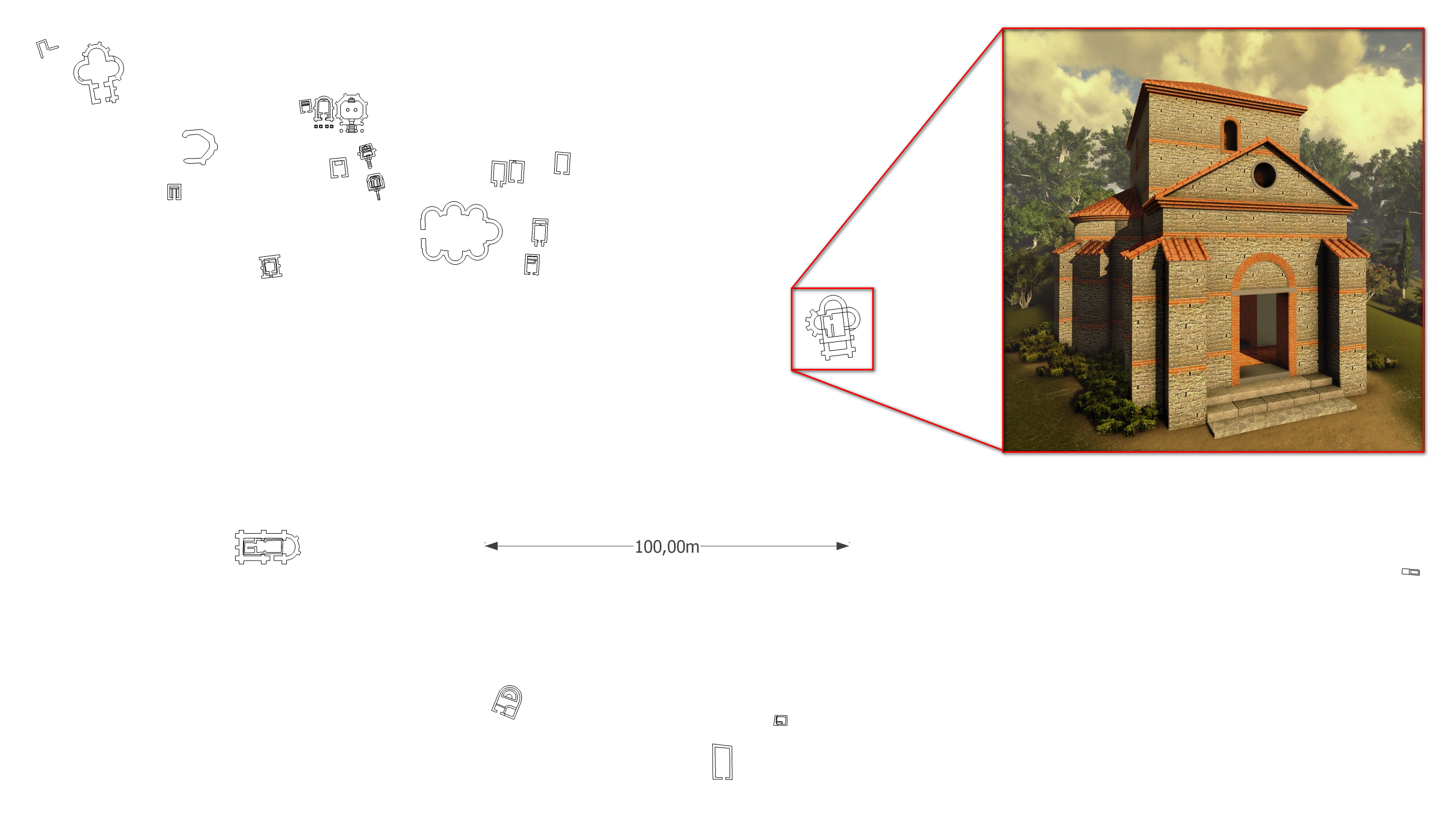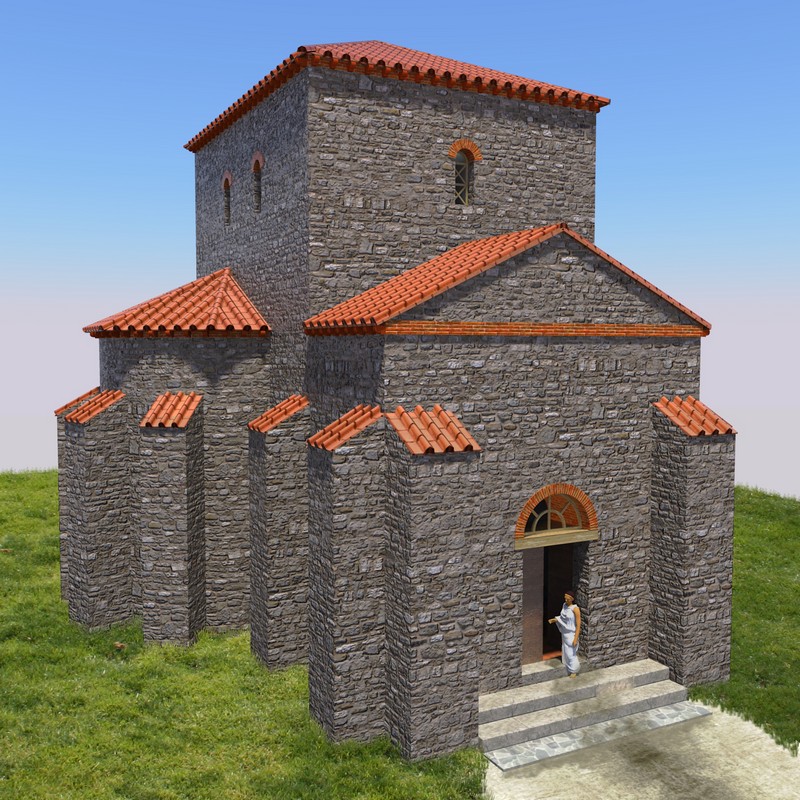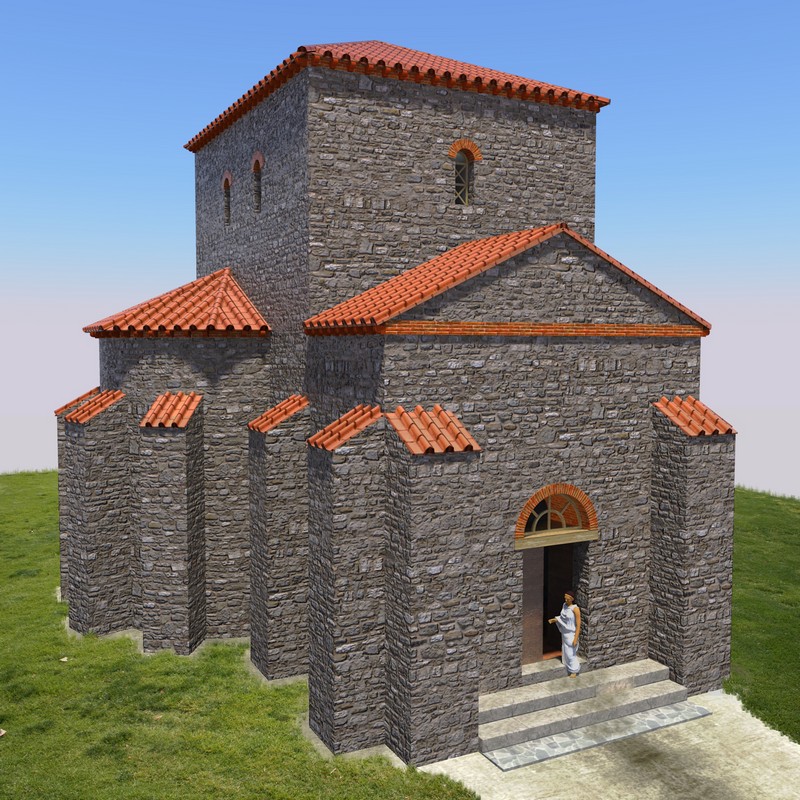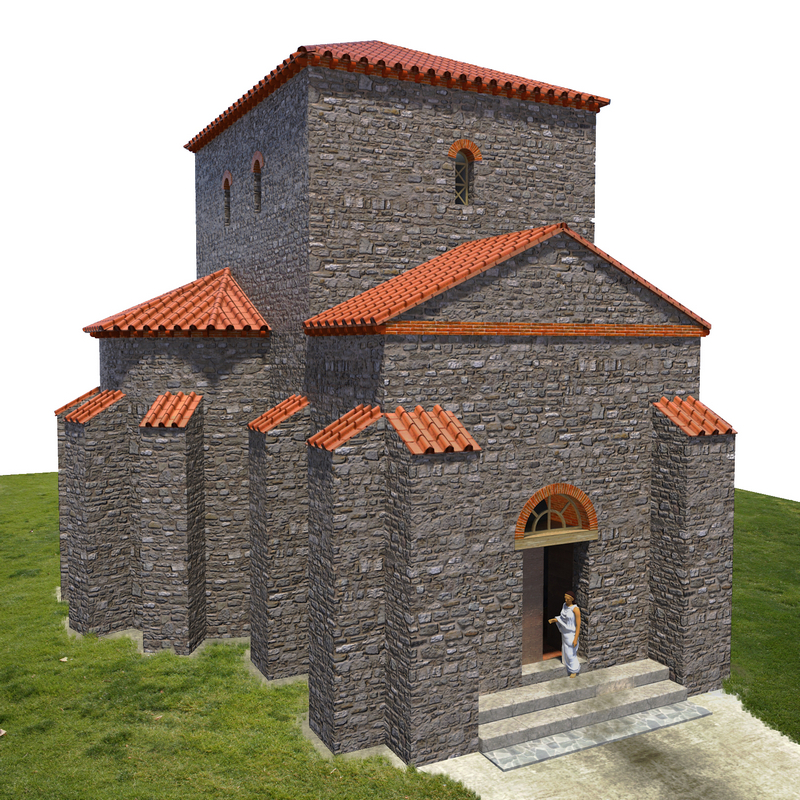Some Roman World Heritage stuff
-
So it is real. I worked as an associate archaeologist on a huge excavation in 2005-2006 when we spent some € 6 million on our World Heritage here. Now (last and this year) a new item was found and added to the ~ two dozen of smaller and bigger Late Roman / Early Christian cemetery structures of our site. The attached image is still a WIP (some proportions have already been changed and the texture will be completely different) but shows the scale of the job nicely. We decided to build the whole World Heritage site this way and use the model for various outputs (from displaying in Google Earth to rendering 3D movies and real-time, "FPS" style walkthrough applications, interactive panoramas and of course, build a complete website...)
Here is an export of the CAD plan and a snapshot of one of the buildings (rendered in Lumion 3D) added.

This is going to be a looong WIP (planned for at least half a year) and there will probably be several applications used to create the various final outputs. Here is an interior of the model of that big, central building with the seven apses:
I will need to catch up with the quality at rendering there...

(It's a physical model and we took the picture by sticking the lens of the camera into the entrance) -
Hi Gaieus!
Can you post some pictures of the building remains? or of the dig?
-
Here is a panorama of the one with seven apses as we took it when it was fully excavated:
http://en.septichora.hu/360d-panorama-cella-septichora/
(The site is practically "empty" though).Here is an image gallery of the recent excavation of this three apse building (Hungarian but well...)
http://regeszet.jpm.hu/index.php?menuID=83&cikkID=897&sorszam=2
Also scroll to the bottom here to see some more during the excavations:
http://www.pecskep.hu/logic/pages/showdoc.php?id=989 -
WOW.....!!
nice project...!!

-
what a great heritage you have Gai

nice model too
-
Brilliant and inspirational...fascinating to see what these structures looked like
-
Gai, where did you get the un-shadowed textures and how did you achieve the roughness at wall intersections? Are the individual edges modeled or did you do a lot of post? What kind of finish would the walls have had when the building was occupied?
Nice work.
-
Thanks guys (and sorry for the late replies but I was away then had a bunch of guests this week).
Roger: which texture do you mean? As for the finish: there is no trace of anything so the walls would be simple stone (and/or mixed with bricks).
-
I was referring to the way the grout lines cut into the surface as you go around corners. In other words, where walls meet is it a geometrically straight line or are the bricks delineated in 3D space?
-
Didn't he write that it was a photo of a physical model?
Looks like a very interesting project to work on anyway - physical or 3D!
-
Sorry about that. He did note that in very very small ensy weensy super small microscopic written on the head of a pin type. My bad.
-
Yes, he was obviously trying to hide the fact that it was a photo by using that tiny font

Photo or 3D - that model is impressive anyway!
-
Ah, ok, sorry. Yes, I also wrote that I wish to catch up with that quality.
There was an architecture professor here who modelled many of these buildings by laying those stones and bricks one by one (at 1:20 scale). He even made the bricks and roof tiles of real, Roman bricks!

Now while some of his models are not archaeologically correct, they are still awesome and are in the exhibition.
As for your question however; those grout lines could be rendered with displacement actually. Need a very nice texture first of all of course.
-
Well, another version of the above model - now rendered in Twilight and grass aded in PP. I'd prefer the first version as the grass coming up a bit onto the walls make it more realistic looking but since we found some traces of bare ground immediately around the building (probably also due to dripping rain from the roofs and all), I had to PP that ground in, too. Now it looks rather fake and as if the whole building were just floating there but as you say, the client is always right.
Some irregularities here and there on the walls (like the stones mixed with some bricks) would be nice but the walls were definitely not striped as in the first picture.
I have yet to model another dozen of them this week.



-
Hi, Gaieus:
I am just guessing, (believe me, I am no render expert) but maybe some atmospheric effects to soften the starkness of the stone walls could make the building "settle down"? Also, maybe the point of view and the way the hill falls off seem to contribute to the unwanted floating effect?Edit: Perhaps, randomly add some baldness here and there that extends further from the dripline?
-
In fact, probably even the current "sky" will be removed (like here). The more random and extensive, bare blotches may be a good idea. (Good that I have the file with a bunch of layers so I can experiment without screwing up the final image)


-
Hi, Gaieus:
It seems the front steps may need some "blending"? -
They are actually huge stones (5 in a row) and I even rounded their edges and correctly UV mapped them but this is not visible from here.

-
Hi, Gaieus:
Do you have any historical data to suggest how the upper edges of the terra cotta caps on the buttresses interfaced with the stone? This transition is an age old problem as far as moisture protection goes, especially in today's pallette of materials. There certainly would not be any immediate problem in solid stone masonry, but leaching of the mortar due to continual moisture would certainly become a problem in 50 years or so. I understand the Romans actually developed a form of hydraulic concrete. Perhaps they had a similar mortar? -
I really have no idea. Most probably these details are what have been repaired several times even on existing buildings and the original has not survived. Here, in Hungary, they still use the technique (on older buildings) that they simply smear a thick layer of mortar in places like that hoping the owner will not notice.

Advertisement







